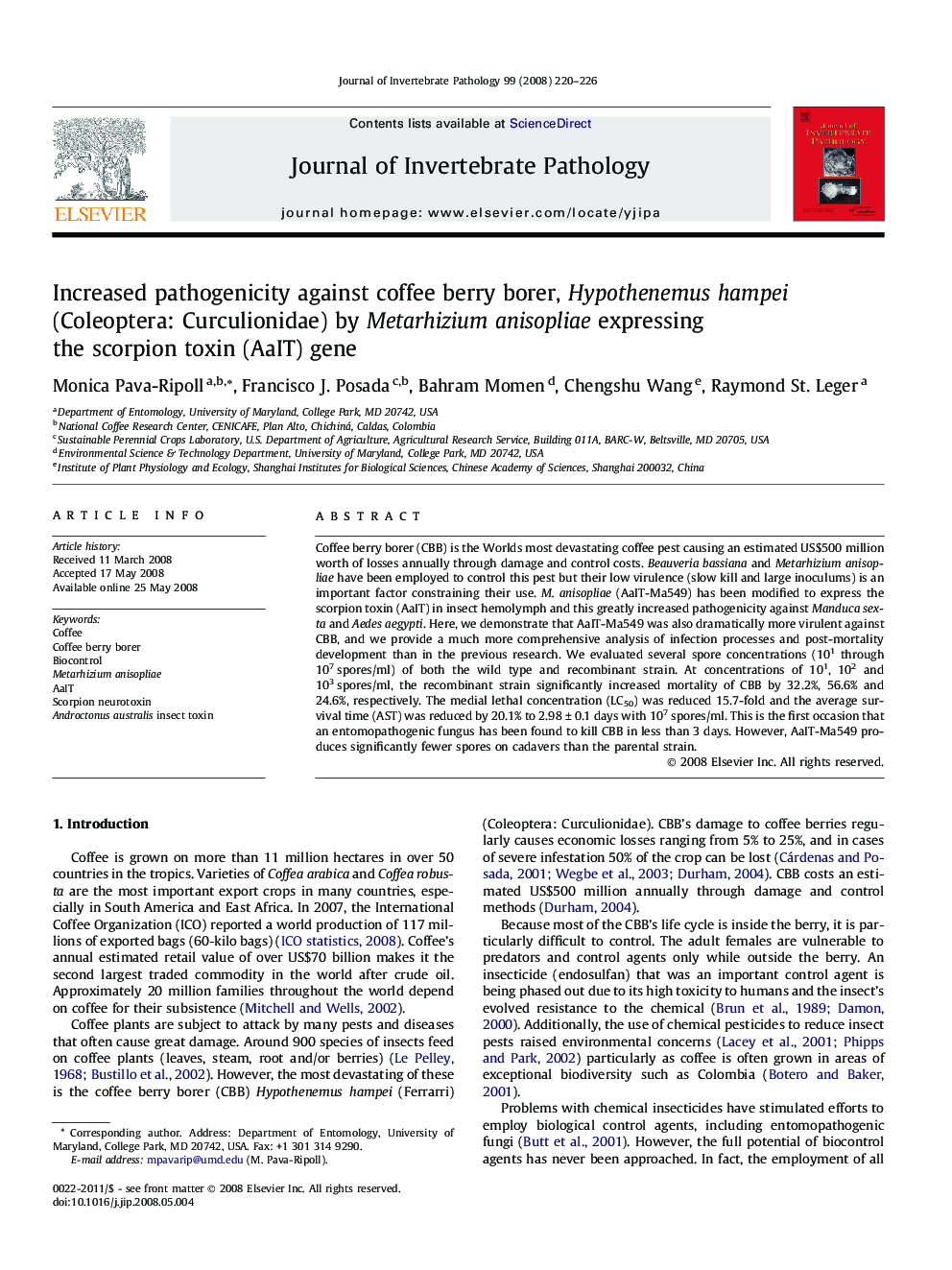| Article ID | Journal | Published Year | Pages | File Type |
|---|---|---|---|---|
| 4558396 | Journal of Invertebrate Pathology | 2008 | 7 Pages |
Coffee berry borer (CBB) is the Worlds most devastating coffee pest causing an estimated US$500 million worth of losses annually through damage and control costs. Beauveria bassiana and Metarhizium anisopliae have been employed to control this pest but their low virulence (slow kill and large inoculums) is an important factor constraining their use. M. anisopliae (AaIT-Ma549) has been modified to express the scorpion toxin (AaIT) in insect hemolymph and this greatly increased pathogenicity against Manduca sexta and Aedes aegypti. Here, we demonstrate that AaIT-Ma549 was also dramatically more virulent against CBB, and we provide a much more comprehensive analysis of infection processes and post-mortality development than in the previous research. We evaluated several spore concentrations (101 through 107 spores/ml) of both the wild type and recombinant strain. At concentrations of 101, 102 and 103 spores/ml, the recombinant strain significantly increased mortality of CBB by 32.2%, 56.6% and 24.6%, respectively. The medial lethal concentration (LC50) was reduced 15.7-fold and the average survival time (AST) was reduced by 20.1% to 2.98 ± 0.1 days with 107 spores/ml. This is the first occasion that an entomopathogenic fungus has been found to kill CBB in less than 3 days. However, AaIT-Ma549 produces significantly fewer spores on cadavers than the parental strain.
